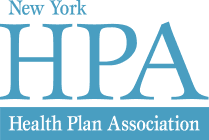MEMORANDUM IN OPPOSITION
FOR IMMEDIATE RELEASE: JUNE 6, 2016
Re: A.10478 (Cusick)/S.6962-A (Hannon) AN ACT to amend the insurance law, in relation to the use of abuse-deterrent technology for opioids as a mechanism for reducing abuse and diversion of opioid drugs.
The New York Health Plan Association (HPA) has serious concerns that A.10478/S.6962-A will undermine plan efforts to manage the pharmacy benefit and will increase pharmacy costs for New Yorkers. Abuse-deterrent opioid analgesics are not intended for all individuals who require an opioid; they should only be used in a clinically appropriate manner. HPA is opposed to this legislation as it would mandate coverage for any and all such drug products without balancing patient need and the significantly higher cost of these drugs.
The Governor vetoed in 2015 nearly identical legislation to A.10478/S.6962-A. In Veto Message Number 284 of 2015 the Governor stated: “The effectiveness of such drugs is currently under review, and it is simply too early to tell whether it would achieve its intended effect. Second, abuse deterrent opioid drugs are approximately two to three times more expensive on a daily basis than opioid drugs that lack abuse-deterrent properties, thus resulting in increased, and unplanned, cost to the State and consumers.” The Governor directed the Department of Health (DOH) and the Department of Financial Services (DFS) to study the costs associated with prescribing abuse-deterrent drugs and whether the benefits of such drugs necessitate a change to the drug formulary. At this time neither DOH nor DFS has released any findings as to whether abuse-deterrent drugs as mandated by this legislation are appropriate.
Sponsors believe these drugs will be an important tool in New York’s efforts to address prescription drug abuse—along with the growing problem of heroin addiction that is in large measure caused by prescription opioids. However, we should not look to address prescription drug abuse with other prescription drugs that have the potential to be abused as well. It is important to be fully aware of all of the COMMON MYTHS AND MISCONCEPTIONS ABOUT PRESCRIPTION DRUG ABUSE AND ADDICTION before you can start looking to effectively tackle the issue of prescription drug abuse.
Abuse-deterrent formulations are designed to make it more difficult for abusers to crush, chew, snort or inject prescription opioids. However, the abuse-deterrent drugs themselves can be abused—the federal Food and Drug Administration requires they carry a “black box” warning— and, therefore, are not the cure-all advertised by manufacturers and embraced by law enforcement. The legislation does not address the need to educate prescribers and patients on issues surrounding opioid abuse.
Because the abuse-deterrent properties can be defeated, these drugs have a “street value” as a new product subject to abuse. Moreover, across the country new HIV infections are rising dramatically in the wake of prescription opioid abuse, including abuse deterrent formulations, as illustrated in a recent Yahoo! News video, “HIV in the Heartland”. Legislation such as this can undercut the Governor’s Ending AIDS initiative.
Cost and efficacy must also be considered. A drug formulary is a continually updated list of prescription medications that represents the current clinical judgment of providers who are experts in the diagnosis and treatment of disease. They have existed for decades and are commonly used by hospitals, health plans, pharmacy benefit managers, self-insured employers and union welfare funds, and government programs to provide affordable access to proven medications to ensure high quality care. The true value of a formulary is maximized when it is part of an integrated patient care process that encourages physicians, pharmacists and other caregivers to work together to ensure positive and cost-effective results.
This legislation would require that health plan formularies provide coverage “for at least one abuse- deterrent opioid analgesic drug product per opioid analgesic active ingredient.” This phrase is overly broad, vague, confusing, and intended to require health plans to cover any and all abuse-deterrent opioid drugs on their formularies. Mandating coverage of multiple abuse-deterrent drugs on drug formularies will deter the appropriate use of these drugs to the detriment of patients. Drug manufacturers have an incentive to raise not lower cost if government mandates each health plan to offer their drugs.
Post-marketing studies for abuse-deterrent opioid drugs have not yet determined whether these drugs, which are often priced up to ten times the cost of various generic opioids, effectively curb misuse or abuse of opioids. Mandating formularies to cover all versions of abuse-deterrent opioid drugs solely because an existing formulary contains an “opioid active ingredient” will result in businesses and consumers paying more for drugs and may not result in lowering the incidence of opioid misuse or abuse. This legislation will result in higher medication costs for public and private payers with no increased benefit for at-risk patients. It is important to note that any increased costs associated with this legislation will also have a direct impact on the Medicaid global cap.
This bill is overbroad and will result in a dramatic increase in pharmacy costs for both the state Medicaid program, State Employer, and commercial insurance. For these reasons, HPA opposes A.10478/S.6962-A.
